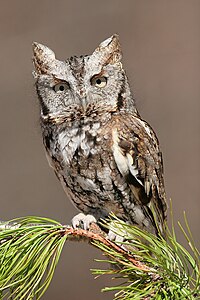
Photo from wikipedia
Abstract Conservation efforts are investigating the impact of diseases within a species of interest, including prevalence and transmission and morbidity and mortality rates. However, the majority of these studies focus… Click to show full abstract
Abstract Conservation efforts are investigating the impact of diseases within a species of interest, including prevalence and transmission and morbidity and mortality rates. However, the majority of these studies focus solely on the characteristics of a single pathogen. Recently, the role of copathogens has been reported to impact disease susceptibility and mortality. To that effect, a survey was conducted including 318 eastern box turtles (Terrapene carolina carolina) from populations in Illinois and Tennessee in 2014 and 2015. Blood samples and oral swabs were collected for quantitative polymerase chain reaction (qPCR) of 15 different pathogens performed in a multiplex format using Fluidigm array technology. Four pathogens were found with varying qPCR prevalence: ranavirus (FV3; n = 2, 0.6%), Terrapene herpesvirus 1 (TerHV1; n = 129, 40.7%), box turtle Mycoplasma sp. (BT Myco; n = 14, 4.6%), and box turtle adenovirus (BT Adv1; n = 18, 11%). Thirteen pathogens were not identified in any sample, including Mycoplasma agassizii, M. testudineum, Salmonella enteriditis, S. typhmirium, Borrelia burgdorferi, Anaplasma phagocyophilum, tortoise intranuclear coccidia, Ambystoma tigrinum virus, Bohle iridovirus, Epizootic hematopoietic necrosis virus, and testudinid herpesvirus 2. Copathogen occurrence was rare but was observed in eight individuals with TerHV1-BT Myco detection and two animals with TerHV1-Adv1. Significant differences were observed in pathogen detection across season (TerHV1, BT Adv1, BT Myco, and TerHV1-Myco) and year (TerHV1, BT Adv1, and TerHV1-Myco). The results of this survey highlight that a single pathogen model may not adequately explain pathogen dynamics and that conservation efforts need to be aimed at detecting multiple pathogens in order to fully characterize population health.
Journal Title: Journal of Zoo and Wildlife Medicine
Year Published: 2017
Link to full text (if available)
Share on Social Media: Sign Up to like & get
recommendations!